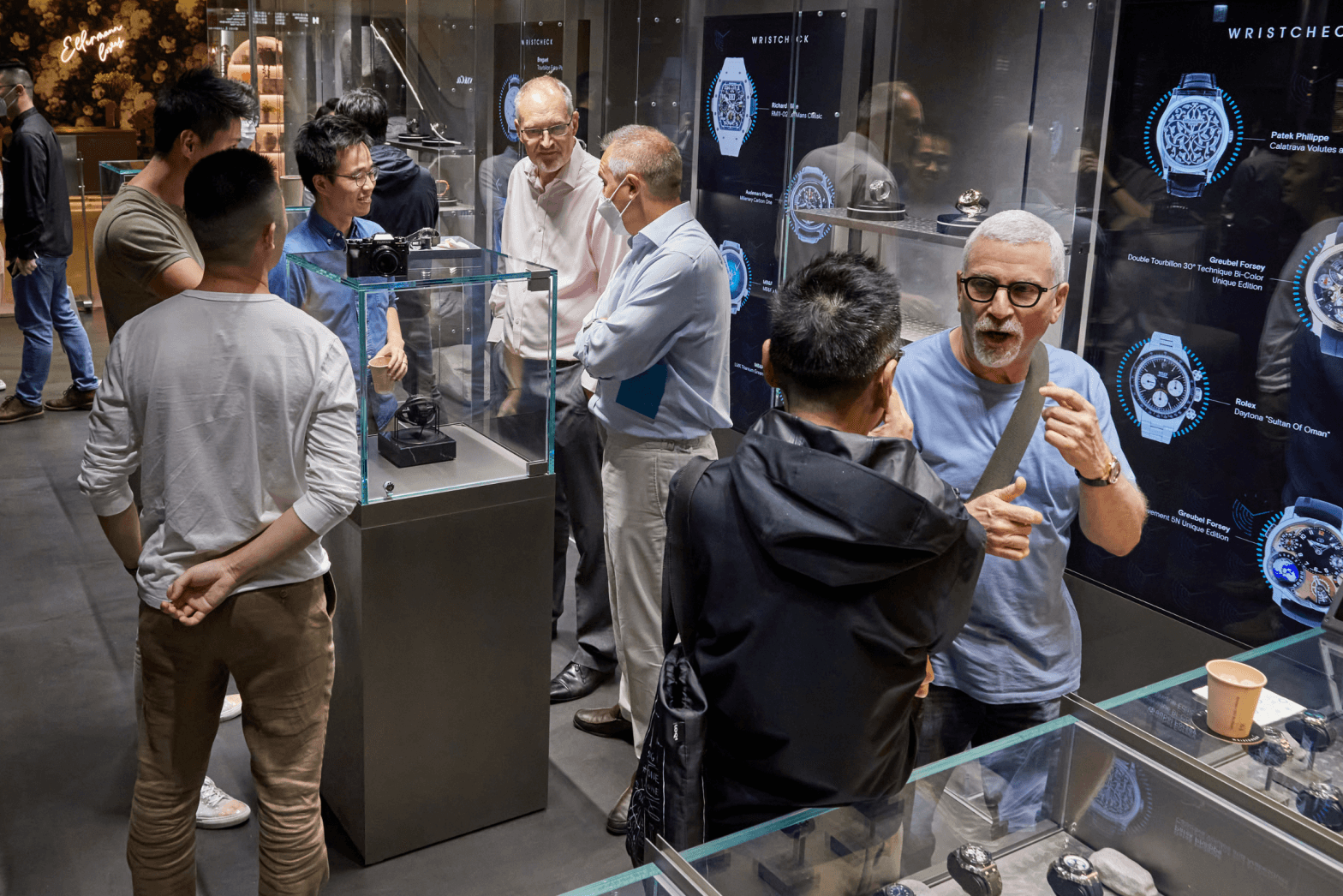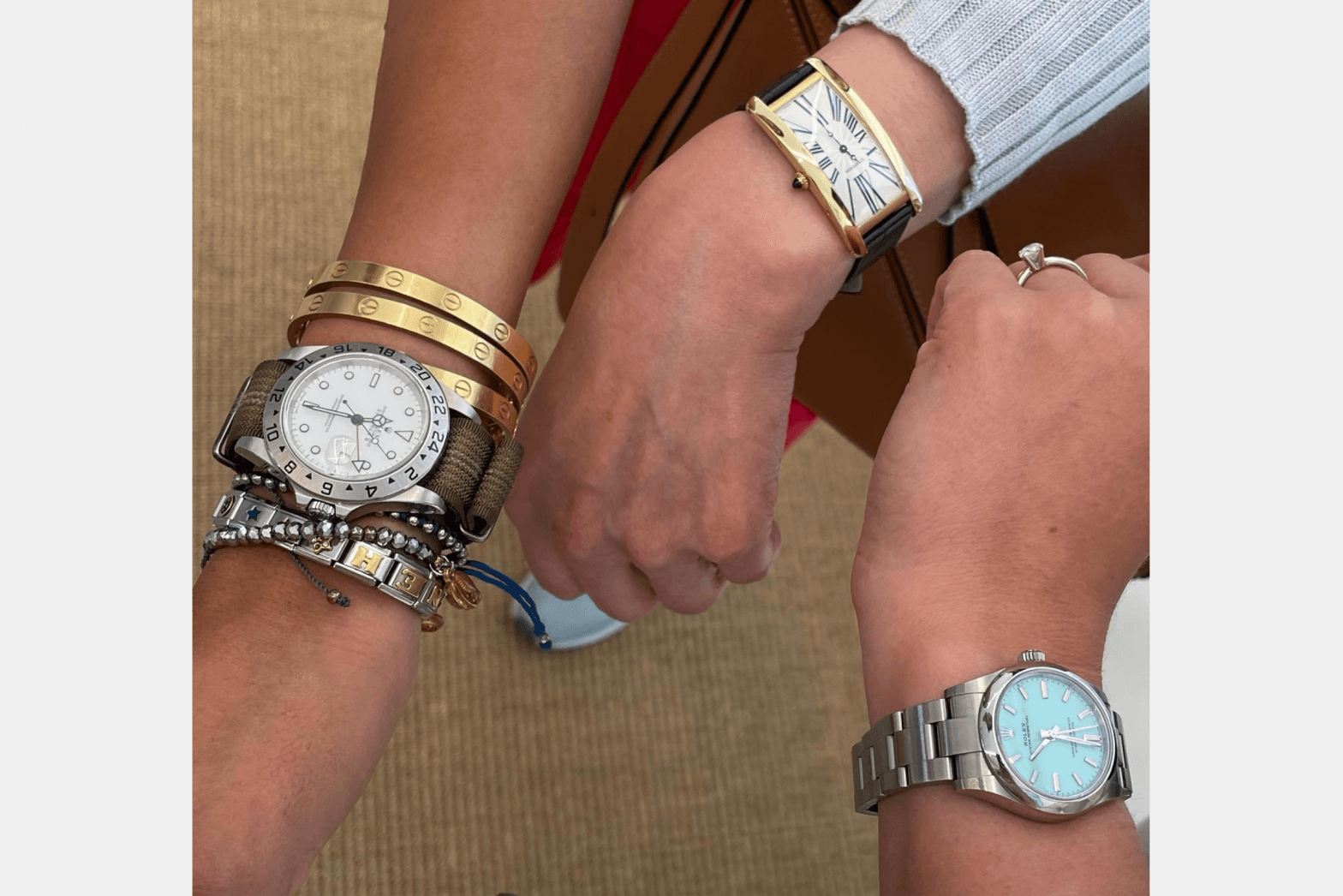
How Watch Clubs Became A Pillar of Horological Culture
From their origin as informal gatherings of like-minded enthusiasts to their current status as a ‘third arm’ of the industry, we ponder the evolution of watch clubs in recent years – and the shape they’ll take in future
As in any heritage-rich and artistically varied hobby, it goes without saying that watch collecting has seen its fair share of ‘clubs’. Once a loose catch-all used to describe the many social communities that rally around the activity of collecting watches—or even a particular niche subset therein—these organizations are now evolving, to better reflect changes in the business-end of the industry and broader horological culture. The key takeaway? Such communities of like-minded individuals (increasingly, bonded together by missions that go beyond mere enjoyment of the same timepieces) are a force to be reckoned with—and they’re only just getting started.
Crew Love: The Rise of Watch Clubs As Social Hubs
Despite the vast plurality of experiences that are now encompassed under the ‘watch club’ label, a good chunk of these are still defined by their ability to foster a sense of social community. Most famously, there’s Red Bar: originally a US enthusiast group, founded by Adam Craniotes and Jeffrey Jacques in 2007, it’s now present in over 80 cities with an army of some 11,000 members around the globe. In their most rudimentary form, contemporary watch clubs—whether they be composed of a mere handful or hundreds of individuals—take structural inspiration from RedBar’s brand of community, before tweaking it for their own audiences.

Named for the eponymous New York dive bar where members gathered in the club’s early days, RedBar played a pivotal role in popularizing a number of tropes that now come as standard in the watch club space. Gratuitously large piles of timepieces, group ‘wrist shots’, constant invocation of the phrase ‘watch GTG’ (short for get-together): these are all concepts that existed prior to RedBar’s inception—however, the group’s emergence in the late 2000s, concomitant with the rise of social media platforms like Instagram, yielded the optimum environment for achieving widespread popularity.

According to Kathleen McGivney, CEO of RedBar Group, the other element that contributed to this perfect storm was the club’s “no-snobs” membership policy – a core value that local chapters around the world fervently uphold to this day. “The first time I attended RedBar, I brought the Swatch collection that I shared with my then spouse,” says McGivney. “When I saw people delightedly removing their Rolexes and Patek Philippes to try on my Swatches, I knew I was in the right place.” The sincerity of this sentiment—one which embraces a wide range of watch enthusiasts, all of varying means and taste—is embodied in Craniotes himself, a great big polymath of a collector whose own interest in watchmaking began with the humble Casio F-7. “Everybody should feel equal,” says Craniotes. “At RedBar, the person who knows more than you do wants to share that knowledge with you; the person with the rare watch wants to share it with you. I think that’s what separates us from others.”
It’s clear that this accessible approach to building a network of like-minded enthusiasts has proven influential—in Hong Kong for instance, The Horology Club merely requires new members to sign up to its newsletter—but it’s far from the only option. RedBar’s ‘big tent’ philosophy can be contrasted with the modus of city-specific groups like Shanghai Watch Gang and Le Paris Watch Club: both of which lean heavily on social media tools that are context-specific (WeChat and Clubhouse respectively) while promoting a policy of membership that is ‘invite only’.

Naysayers have often unfairly accused such a recruitment model of being exclusionary, when the reality is that these clubs’ day-to-day operations aren’t that far removed from the experience of attending your local #RedBarCrew. The emphasis on passion, sharing knowledge and a willingness to contribute to one’s community still remains. Moreover, such character traits are often a prerequisite to any membership application—as opposed to the value (monetary or otherwise) of a prospective joinee’s watch collection. Daniel Sum, co-founder of Shanghai Watch Gang—one of the largest clubs dedicated to watch collectors active in Mainland China—stresses the importance of genuine interest when vetting new members. “I’ll usually meet them first, before they join us at a gathering,” he says, “to make sure they’re sincere, passionate, and that they handle watches respectfully”.

Enthusiasts, Incorporated: The Growth Of For-Profit Watch Clubs
Buoyed by platforms like Zoom and Discord, the potent feeling of solidarity that these watch clubs have been able to project helped sustain interest from the community at-large during the early days of the Pandemic. That runs parallel with another interesting development in the space—the steady growth of watch clubs as commercial enterprises. Not quite the large, sprawling lifestyle brands backed by venture capital which many of the traditional watch publications have become; these for-profit clubs are instead all about evolving the traditional conception of a watch group—to allow for fundraising activities that benefit members in the longer run.

One exemplary case study is Collective: a club founded in Silicon Valley in 2018, by Facebook alumnus Asher Rapkin and Gabe Reilly. Unlike most other clubs, membership in Collective is conditioned upon purchase of whatever the group’s latest collaborative watch is. For his part, Rapkin is candid about the rationale for this policy, explaining that it largely has to do with the financial realities of running a full-time business. “It’s simple,” he says, “aside from providing access to watches, we program events, content and unique opportunities throughout the year—and the only way to pay for that is to ensure all our watches are sold. We’ve always been open about the fact that [Collective] is a business and that’s because it often takes years of work to bring a project to life and that time is valuable. Things fall apart when collectors feel they’re being used or lied to—the best way to avoid that is to be completely transparent from the get-go”.

This candor about the nature of how Collective operates has won Reilly and Rapkin a small, yet devoted following—all of whom are eager to part with their hard-earned dollars because of the quality of product that it bankrolls. To date, the club has released five collaborative watches: including an IWC pilot’s chronograph; a meteorite version of J.N. Shapiro’s ‘Infinity Series’; and even an Urwerk UR100-V inspired by the Space Shuttle Enterprise. When asked what the secret is to this consistently high caliber of collaboration (with some of the most interesting brands in the watch world) Rapkin’s answer is deceptively simple. “The first—and most important—element,” he says, “is to have a concept that inspires everyone”. “Secondly, you need a good partner that’s willing to lean in and do the work to make sure that the end product is recognizably in the voice of its maker, while still saying something distinctive. The watch community can sniff out a fake narrative better than any other, so an earnest commitment to telling a shared story is critical.”

While ‘collaborative watches’ are where Collective concentrates the majority of its resources, they are also not the sole kind of product to emerge from the dynamic relationship between private clubs and the wider watch industry. Laypeople might be at pains to spot the difference, but special editions—à la those made in recent years by Cartier for the Dubai and Singapore Watch Clubs—are yet another separate, but interrelated exercise to the work of groups like Collective. “‘Club Watches’ have been a staple of the watch world for decades,” says Rapkin. “Often, they’re about featuring unique elements that are specific to the tastes of a collecting group and are ordered by that group directly. They’re also rarely publicized or shared outside the group.” Again, this offers an enjoyable point of contrast to collaborative watches, the entire purpose of which is to “tell a story the brand on its own couldn’t or wouldn’t have thought to do”. These subtle but important distinctions are all to the benefit of collectors: who now more than at any other time in history, have a plethora of ways to support the work of their favorite watch clubs.

Beyond The Wrist: How Watch Clubs Are Tackling The ‘Big Issues’
The fact that watch culture doesn’t exist in a vacuum has meant that, over time, the role of its communities has also begun to evolve. In previous decades, you might safely assume that the vast majority of collector clubs catered to an older, affluent, overwhelmingly male audience. But the popularization of luxury watches and their constant proximity to the zeitgeist of entertainment and fashion means that enthusiasts from across the spectrum—whether they’re journalists, collectors or industry people—are now confidently using the forum of community to tackle issues that have long gone unaddressed.

Certainly, when Laetitia Hirschy, Nathalie Veysset and Suzanne Wong founded Watch Femme last February, their goal wasn’t to establish yet another watch club dedicated to female collectors, but rather, a community driven by its shared desire to “amplify women’s voices in the watch world”. The group do so by raising awareness of the disparity in female representation in all aspects of watch culture; help to foster professional connections between women working in the industry; and effectively lobby for reform in how women’s watches are marketed and made. “Every woman who has ever worked in the watch world, encountered it peripherally, or tried to enter as a buyer/collector is struck by how uniformly male it is,” says Wong. “The question isn’t so much what convinced us to create an organization like Watch Femme now—but why we didn’t sooner.”

Wong and her cohorts are quick to acknowledge that all of the club’s activities—its seminars, Clubhouse roundtables, and biweekly meetings—are ultimately rooted in the goal of advancing women’s standing within watch culture. Yet this doesn’t mean that the manner in which it operates is intended to be exclusionary. The club welcomes “members of all genders and backgrounds” and often brings a uniquely female lens to the discussion of issues that are impacting the watch community at-large. “The fact that we put women’s voices in the foreground is not elitist,” says Wong. “It’s the opposite of that.”
Though activism is at the center of everything Watch Femme do, the composition of the group’s membership (including PRs, senior brand personnel and even a few watchmakers) lends itself to a discussion of the archetypal watch club’s future. In an era when consumers are so actively engaged with the work of the brands they support on multiple platforms, it’s arguable that a community made up of those individuals is a lifeline to better business. “Any group that continues to inspire passion—as in mechanical watchmaking—shouldn’t have a problem growing its audience,” says Wong. “The only danger is when watch brands lose touch with their community—and with the people who love what they create.”
